|
CLICK BUTTON TO GO |
|
|
|
|
|
|
|
|
|
|
|
|
|
Videos |
|
|
|
|
|
|
|
|
|
|
|
|
|
PART 1 T O P I C |
|
|
|
|
|
|
|
|
|
|
|
|
|
|
|
|
|
|
JewishWikipedia.info
(Editors Note:
Holocaust survivors trying to recover stolen Nazi plunder
met individual problems.
See also organisations listed below provide such help/information.)
WOMAN IN GOLD 2015 105min
movie, Helen Mirren, Ryan Reynolds
Maria Altman sought to regain a world famous painting of her aunt plundered by the Nazis during World War II. She did so not just to regain what was rightfully hers,
but also to obtain some measure of justice for the death, destruction,
and massive art theft perpetrated by the Nazis.
VIDEO TRAILER 1 VIDEO TRAILER 2 VIDEO TRAILER 3
(Click here for details below)
TOP 10 FAMOUS PIECES OF ART STOLEN BY THE NAZIS
TopTenz, Bryan Johnson, March 13 2014
This records four paintinngs. Go to TopTenz for details of remaining six.
See also 3 Cases That Explain Why Restituting Nazi-Looted Art Is So Difficult
Two steps forward, one step back for Holocaust restitution
Before the outbreak of World War I, Adolf Hitler was a practicing artist. On two separate occasions, Hitler was denied admission to the Academy for Art Studies in Vienna. He took art very seriously and during his 12-year reign as German Führer, the international art industry was demolished. It has been estimated that Hitler stole over 750,000 artworks during the war. The years between 1933 and 1945 are a black hole in the art community, with thousands of pieces of art changing hands and going missing.
During World War II, the Nazis went on a rampage destroying and stealing European art. Priceless pieces of art were auctioned off at extremely low prices. This has created a major problem in the art community that remains evident today. People purchased stolen art and the victim’s families want their possessions back. In many cases, proving the legal rights to a piece of art is a difficult and time consuming process. This article will be examining 10 famous pieces of art that were stolen by the Nazis.
Editors Note: This article was written in July 2010, but we have republished it with the release of Monument Men and the interest that movie has drawn to the theft of art by the Nazis.
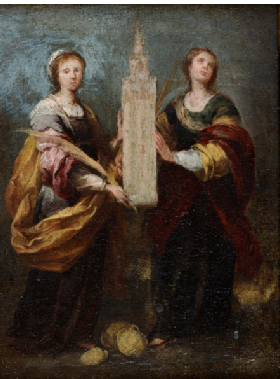 10. SAINT JUSTA AND SAINT RUFINA
10. SAINT JUSTA AND SAINT RUFINA
ARTIST: BARTOLOME ESTEBAN MURILLO
Bartolomé Esteban Murillo is one of the most important Spanish painters in history. He was alive during the 17th century and is a cherished painter of the Baroque period of art. Murillo is probably best known for his religious works, but also painted many portraits of everyday life. In 1943, the Allied armies formed a coalition of men whose goal was to assist in the protection of valuable art and national monuments. The group became known as the Monuments Men. The Monuments Men were vital in the process of gathering stolen art and returning it to the rightful owner. As the Allied Forces liberated Nazi-occupied territories, Monuments Men were present at the front lines. In Germany alone, U.S forces found approximately 1,500 repositories of art and cultural objects, with hundreds-of-thousands of artifacts. Some of the most identifiable pieces of art were immediately returned to their rightful owners. However, thousands of artifacts were never claimed or stolen.
Today
Monument Men organizations still exist today, with the goal of tracking down and returning stolen art. Recently, a member of the organization stumbled upon an old picture taken during World War II. It showed a photo of Murillos famous pair of paintings titled Saint Justa and Saint Rufina. Immediately the connection was made with the Meadows Museum in Dallas, which houses the paintings. The Meadows Museum holds one of the largest collections of Spanish art outside of Spain, with masterpieces by some of the world’s greatest painters. After some intense research, it was confirmed that the museum had the two painting and they were in fact stolen by the Nazis during World War II.
This was accomplished by examining the back of the picture frames, which contained a number R1171. This number is consistent with art stolen by Germany and stands for Rothschild, 1171, which is the 1,171st object stolen from the Rothschilds. The Rothschild family was looted in France, 1941. Like all stolen art, a major legal battle has pursued, as the Meadows Museum legally purchased the portraits at an auction, but the paintings whereabouts before the auction are confusing. The two portraits are estimated to be worth more than $10 million.
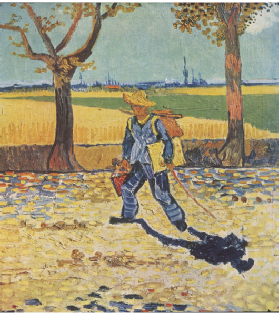 9. PAINTER ON THE ROAD TO TARASCON
9. PAINTER ON THE ROAD TO TARASCON
ARTIST: VINCENT VAN GOGH
Vincent van Gogh was a Dutch painter that died in 1890 at the age of 37. He is one of the most renowned and well known painters in the history of art. On January 31, 1933 Adolf Hitler became chancellor of Germany. One of his first actions was the “cleansing of the German culture,” which included book burnings and the labelling of degenerate art. Degenerate art included all types of modern artistic expression. Any artist, past or present, that was not seen as having Aryan blood was deemed degenerate. Hitler made it a high priority to track down all degenerate art and steal it. If you were labelled a degenerate artist then you were not allowed to paint.
Nazi soldiers would even make routine house calls to ensure that some artists were not painting. The abuse was inflicted on many modern German painters, including Ernst Ludwig Kirchner, who was labeled degenerate and had all of his over 600 works sold or destroyed. Kirchner would commit suicide in 1938. The Nazis destroyed hundreds of famous paintings and the ones that survived were featured in a “Degenerate Art Show.” It was claimed that this show was meant to incite further revulsion against the “perverse Jewish spirit.” The famous pieces of art were crowded into small rooms and often displayed with a hanging cord. According to the history books, the first room contained art considered demeaning of religion, the second featured works by Jewish artists in particular, and the third contained works deemed insulting to the people of Germany.
Some of the artists featured in the show were Alexander Archipenko, Marc Chagall, James Ensor, Henri Matisse, Pablo Picasso, and Vincent van Gogh. After the exhibit ended, the famous pieces of art were either destroyed or sold at auctions. A large amount of “degenerate art” by Picasso, Dalí, Ernst, Klee, Léger and Miró was destroyed in a bonfire on the night of July 27, 1942 in Paris. In 1939, a stolen self-portrait by Vincent van Gogh was auctioned at Gallerie Fisher, Lucerne, for $US 40.000. One of the most famous paintings to be burned during World War II is the Painter on the Road to Tarascon by Vincent van Gogh. It is not known for sure how the painting was burned, but it is thought to have perished when the Allied forces bombed Magdeburg, setting fire to the Kaiser-Friedrich Museum, which contained stolen art.
TODAY
The Painter on the Road to Tarascon was lost forever when it became a causality of the Second World War, but the portrait has left a lasting impression. It remains one of the most cherished pieces of art that was lost in the war. The painting shows a lonely portrait of Vincent van Gogh traveling. The painting was a heavy influence on artist Francis Bacon, who described it as a haunting image of van Gogh, showing him as an alienated outsider. Vincent van Gogh was quoted as saying “Real painters do not paint things as they are…They paint them as they themselves feel them to be.”
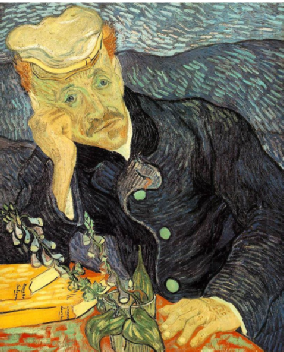 8. PORTRAIT OF DR. GACHET
8. PORTRAIT OF DR. GACHET
ARTIST: VINCENT VAN GOGH
In 1933, the famous Dutch painter Vincent van Gogh was put on Hitler’s list of “degenerate artists.” Many of van Gogh’s most famous pieces of art were stolen from their owners and displayed in mock museums. One of these paintings was the famous Portrait of Dr. Gachet. The month before Vincent van Gogh committed suicide, he painted two different copies of the Portrait of Dr. Gachet. He wrote a letter to his brother regarding the painting, “I’ve done the portrait of M. Gachet with a melancholy expression, which might well seem like a grimace to those who see it… Sad but gentle, yet clear and intelligent, that is how many portraits ought to be done… There are modern heads that may be looked at for a long time, and that may perhaps be looked back on with longing a hundred years later.”
In the case of the Portrait of Dr. Gachet, the Nazis didn’t steal it from a private collector, but stripped the art from the Städel museum in Frankfort, Germany. The Städel acquired the portrait in 1911 and it was confiscated in 1937. Nazi leader Hermann Göring realized the value of the art, so he decided to sell it and make a profit. The Portrait of Dr. Gachet was auctioned off and purchased by a German collector who quickly sold the art to Siegfried Kramarsky. Kramarsky was a Jewish financier that fled to New York in 1938 to escape the Holocaust. He purchased the art for $53,000.
TODAY
On May 15, 1990, exactly 100 years after the paintings creation, the family of Siegfried Kramarsky sold their copy of the Portrait of Dr. Gachet for $82.5 million. At that time in history, it was the most expensive piece of art ever sold. It was purchased by Ryoei Saito, who was a Japanese businessman. Upon Saito’s death in 1996, the painting was thought to have been sold, but no information was made available to the public. Various reports in 2007 claimed that the painting was sold to the Austrian-born investment fund manager Wolfgang Flöttl, but this was never confirmed.
Many questions remain regarding the history of the Portrait of Dr. Gachet. In this specific case, a Jewish man was able to obtain the stolen art. If a high powered German, Russian, or American businessman had profited off of the art, I think more people would have taken offense. The second version of the Portrait of Dr. Gachet is currently in the possession of the Musée d’Orsay, in Paris, France.
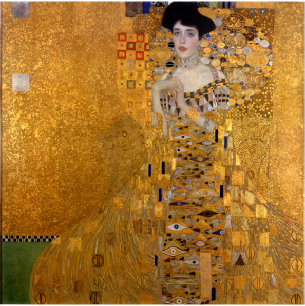 7. PORTRAIT OF ADELE BLOCH-BAUER
7. PORTRAIT OF ADELE BLOCH-BAUER
ARTIST: GUSTAV KLIMT
Gustav Klimt was an Austrian born Symbolist painter. During his lifetime, Klimt created many portraits, murals, and sketches. The primary subject of his work was usually the female body. In 1904, Ferdinand Bloch-Bauer hired Gustav Klimt to create a portrait of his wife Adele. The work took Klimt three years to complete and the portrait is made of oil and gold on canvas. Adele Bloch-Bauer died of meningitis in 1925. In 1938, all of Ferdinand Block-Bauer’s property was put under “Protective Custody” by the National Socialist party. During the war, everything was taken away from Ferdinand and he eventually died in Zürich, Switzerland in November of 1945.
The will of Ferdinand Block-Bauer’s made no mention of donating his property to a museum. After the war, the three living Bloch-Bauer siblings attempted to retain some of the famous paintings from the Austrian government, who were given the pieces of art after Nazi Germany was liberated. Nothing happened for decades until 1998 when the Austrian government decided that they would return art that had been illegally seized by the Nazis. However, in order to get the paintings returned, rightful ownership needs to be proved in a court of law, which can be expensive. In 2006, the Austrian court ruled that Block-Bauer heir Maria Altmann was the rightful owner of the Portrait of Adele Bloch-Bauer I and four other paintings by Gustav Klimt.
TODAY
Portraits by Gustav Klimt are extremely rare and valuable. After regaining the rights to the Portrait of Adele Bloch-Bauer I, Maria Altmann decided to sell it. In June of 2006 the portrait became the highest selling piece of art up to that point in history. American businessman Ronald Lauder purchased the painting for $135 million and placed it in his Neue Galerie, which is located in New York City. The Neve Galerie is highly dedicated to pieces of Jewish art that were stolen from the Nazis and recovered. Ronald Lauder was quoted as saying that the Portrait of Adele Block-Bauer I is his museums “Mona Lisa.” In November of 2006, the second painting that Gustav Klimt made of Adele Bloch-Bauer (Adele II) sold for almost $88 million. Eventually, all five of the Block-Bauer’s Klimt portraits were sold, with a grand total of approximately $325 million.
SAVING EUROPE'S ART FROM THE NAZIS
TIME William Lee Adams / London Tuesday, Aug. 25, 2009
As World War II raged, Adolf Hitler retained an ambition to build the world's finest museum in his hometown of Linz, Austria. He planned to call it the Führermuseum and hoped to stock it with the greatest works of art from around the globe — which he would obtain by looting collections and museums in occupied territories and hiding them until the war ended.
From 1942 until 1951, 365 men and women serving in the Monuments, Fine Arts & Archives division (MFAA) of the Allied forces dedicated themselves to stopping Hitler's dream from becoming a reality. Known simply as the Monuments Men, they recovered Nazi records from bombed-out cathedrals and followed leads across the continent in a bid to recover Europe's most splendid treasures.
In his new book Monuments Men: Allied Heroes, Nazi Thieves and the Greatest Treasure Hunt in History, American writer and art detective Robert Edsel tells the stories of seven of them, including America's top art conservator, a sculptor and an openly gay infantry private. Edsel spoke with TIME about the challenges they faced.
WHY DID HITLER WANT TO BUILD THE FÜHRERMUSEUM?
He was a frustrated, aspiring artist. He had applied to the Academy of Fine Arts in Vienna as a painter and been rejected. He had been encouraged to reapply for architecture school and was rejected again. He believed that the majority of the jurors at the academy were Jews. He was determined to get back at them and diminish Vienna's cultural influence over Europe by rebuilding Linz. It was an industrial city and wasn't particularly attractive. He wanted to make it magnificent.
DID THE NAZIS TARGET SPECIFIC WORKS, OR WAS IT MORE ABOUT GRABBING WHATEVER THEY COULD?
There were definitely works of art they were determined to steal. An example would be the so-called big three from Krakow — Leonardo's Lady with an Ermine, Rembrandt's Landscape with the Good Samaritan and Raphael's Portrait of a Young Man. The Nazis seized them within two months of the 1939 invasion [of Poland]. They didn't go where the works of art were supposed to be hanging in the museums. They went to the country house where they had been hidden because their intelligence was so good.
IN THE BOOK YOU DESCRIBE HOW THE MONUMENTS MEN USED RECOVERED RECORDS, OVERHEARD CONVERSATIONS AND DIARIES TO TRACK DOWN VARIOUS WORKS. WHAT WAS THEIR MAIN TACTIC?
They would go around and interrogate people. They would look for museum directors and curators and ask where pieces of art were. They'd hear vague things like, "Well, the last time we saw it the armies were going east," or "The Nazis came and said 'We're taking these works to safeguard them' " — a very utilitarian word to describe theft and robbery. Eventually they started finding people who knew things, and those people would send them to see someone else who knew something more specific.
WHERE ARE SOME OF THE PLACES THEY UNCOVERED ARTWORKS?
Some were in castles like Neuschwanstein in Bavaria. The Veit Stoss altarpiece [a 15th century three-story wooden altarpiece and Polish national treasure] was in a tunnel in Nuremburg. The Nazis built false walls into castles. The mining system in Germany is extensive, so they also hollowed out salt and copper mines and built racks all the way around.
WHEN THE MONUMENTS MEN FOUND STOLEN ART, WAS IT GENERALLY IN GOOD CONDITION?
Early on many works were stored fairly well. But as the Nazis got more desperate in the later stages of war they were having to move not only the works they stole but also art from their own museums. Frames consume a lot of space, so paintings were literally pulled out of their frames. The Nazis were loading trucks in the open rain and putting art into damp mines. There are all sorts of cases of Monuments Men finding paintings with moss literally growing through the weave of the canvas like an old Chia Pet. Other paintings were loaded on to straw on open trucks and rattled back and forth over rickety roads. The Nazis were moving the works as the Western Allies were pummeling them from the air. Frankly, it's a miracle more paintings weren't destroyed.
WHY ISN'T THE STORY OF THE MONUMENTS MEN BETTER KNOWN?
They weren't a big group. There were 12 Monuments Men on the ground by the time of the landings on Normandy. By the end of the war, there were fewer than 60 in the field. Most of them didn't know each other because they were just so spread out geographically. There was never a cohesive unit. They never had a patch. They were sublet to whatever army they were with. And at the end of the war I think they came back and they just got lost in the fog of history.
THE MONUMENTS MEN STAYED IN EUROPE FOR SIX YEARS AFTER THE WAR TO FINISH THEIR WORK. HOW MANY WORKS DID THEY EVENTUALLY RETURN?
By 1951 they had restituted more than 5 million objects. That includes thousands of church bells the Nazis were going to melt down and use for war materials. The main mine that contained many of the works destined for Hitler's Führermuseum had more than 10,000 paintings, sculptures and other works of art. It's unimaginable. We're not talking about average things, but sculptures by Michelangelo and paintings by Vermeer.
FOR THE MONUMENTS MEN, WAS IT JUST A MATTER OF PROTECTING OBJECTS FROM THE NAZIS?
They wanted to be right there where the action was so they could get in and protect our cultural heritage — and not just from the enemies. Often times a well-intentioned core of engineers would see a church in ruins, knock it down and use the material to build roads. Because of their experience with restoration, the Monuments Men realized that sometimes those churches could be salvaged. Sometimes the pieces of a fresco could be put back together. Sometimes something that looked beyond repair could be repaired and they had the sensibility to understand that.
THERE ARE STILL THOUSANDS OF STOLEN WORKS FLOATING AROUND IN ANTIQUES SHOPS, IN PEOPLE'S PRIVATE COLLECTIONS AND ELSEWHERE. DO YOU THINK THEY'LL EVER BE RECOVERED?
I think over the next 15 to 20 years many of those things that are missing will surface. As the WW II generation passes over the next five to 10 years, these things in attics and basements and on walls will pass on to younger generations, and they might try to sell them. Buyers will want to know what they are buying and where it came from — and that could lead to answers.
JEWISH BOOKS PLUNDERED BY THE NAZIS
Millions of books were stolen by the Nazis during World War II. These books were utilized by the Nazis to “investigate” the “Jewish problem.”
The Librarians, Daniel Lipson, 19.11.18
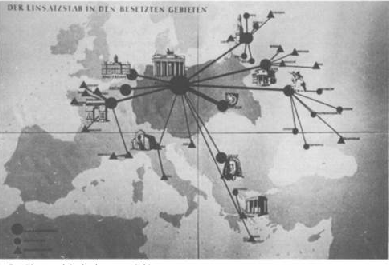
ERR’s collection centers for stolen books in Europe.
(Photo: Yad Vashem)
During World War II, the Nazi forces confiscated millions of books from institutions and archives across Europe from “enemies of the regime” which included Bolsheviks, Freemasons, Jews, and others. According to one estimate, approximately five million books were taken from Jewish libraries and Jewish collections over the course of the war. The stolen publications included books on Jewish studies, poetry, and Hebrew literature along with sacred books, manuscripts, and books on science and culture that were written in several languages including Hebrew, Yiddish, Polish, and German.
The Reich Institute for the History of New Germany (Reichinstituts für Geschichte des Neuen Deutschlands), was founded in 1935 and was one of the most significant destinations for stolen books – Jewish books in particular. The director of the institute was the Nazi historian Walter Frank. Some of his writings published by the institute can be found in the National Library.
The two main bodies that collected Jewish books were the Reich Main Security Office (Reichssicherheitshauptamt) and the Advanced School of the Nazi Party (Hohe Schule der NSDAP). The Reich Main Security Office was founded by Heinrich Himmler and was considered to be the strongest branch of the Third Reich as it included the Gestapo forces, the police, the Einsatzgruppen, and other departments. The ministry was responsible for identifying security threats to the country from its enemies within a jurisdiction that included all occupied countries. One of the departments of the institution, headed by Dr. Franz Alfred Six, worked to collect entire libraries from various parts of Europe for the purpose of investigating the ideological enemies of the Nazi regime.
In 1933, the same year that the Nazi party rose to power, the book confiscations began. The first stage focused on the Freemasons and later grew to include Jewish libraries. With the annexation of Austria, the Jewish collection of the Reich Main Security Office grew to eighty-five thousand volumes. Twenty-four thousand of these books eventually found their way to the Jewish National and University Library in Jerusalem, what later became the National Library of Israel. As more Eastern European countries were occupied, more public and private libraries were raided and their contents were sent to the central library in Berlin.
Nearly two million books accumulated in the central depository of the ministry, but the Reich Main Security Office focused most of its attention on archival material including personal documents, community books, and other information – documents that could help them investigate, identify and annihilate their enemies including the Jews.
With the start of the American bombing of Berlin in 1943, much of the collection was transferred to Silesia and Bavaria for safekeeping. Some sixty thousand Jewish books were sent to the Theresienstadt ghetto where they were cataloged and kept separately from the ghetto library. After the war, the Theresienstadt books were turned over to the Jewish Museum in Prague. The books that remained in the Reich Main Security Office in Berlin were discovered by the Soviet and American forces, respectively (there were two separate buildings for the library in Berlin).
In the end, most of the collection (including many Jewish books and archival documents) fell into the hands of the Soviet Army. It was only with the collapse of the Soviet Union that these books were allowed to be examined by the Russian authorities. A relatively small amount of the materials were returned to previous owners and the fate of the majority of the material confiscated by the Russians is unknown.
The other entity that competed with the Reich Institute for the History of New Germany and the Reich Main Security Office in obtaining the books was the book confiscation unit established by Alfred Rosenberg called the ERR. Though, in terms of the quantity of material stolen, this organization had no real ability to compete with the Nazi security services.
In 1939, Alfred Rosenberg, the chief ideologue of the Nazi party, began laying the foundations for the establishment of the Advanced School of the Nazi Party (Hohe Schule der NSDAP). This institution was set to become the center of Nazi academic studies. Hitler planned to open the school after Germany’s victory in the war and ordered Rosenberg to carry out the preparatory work with a focus on research and the establishment of a library.
The Advanced School of the Nazi Party was meant to include eleven research institutes throughout Germany, specializing in the fields of religion, race, folklore, German studies and more. In reality, the only research institute that was ever established was the Institut zur Erforschung der Judenfrage (IEJ). This institute was opened in Frankfurt and, as every academic institution does, it needed a respectable library. When establishing a library of this sort, books are typically purchased by the institution or received as donations – but the Nazis had a different method.
Rosenberg established a special unit that he named after himself. The Einsatzstab Reichsleiter Rosenberg (ERR) was tasked with touring the major libraries of occupied countries and organizing shipments of the important books back to Germany. The ERR focused mainly on France and the Netherlands at the start of the war, robbing many famous libraries and several Jewish collections including the Rosentiliana Collection, the Etz Chaim collection in Amsterdam, the Library of the Rabbinical Seminary and the Alliance organization in Paris.
When Germany invaded Russia and Rosenberg became responsible for the collection of publications in the occupied territories in the east, many additional Jewish libraries fell into his grasp. The ERR confiscated every collection that appeared significant to its operatives and the rest were sent off to be destroyed. Books destined for the Institute for the Study of the Jewish Problem were sent to Frankfurt and books intended for the other institutes of the Nazi Party’s Advanced School (for a later time when the institute would be opened) as well as books with an unclear destination, were sent to the Central Library in Berlin. Books that arrived in Berlin and were deemed unnecessary for academic purposes were distributed to libraries of universities and other institutions in Germany. Some remain there to this today.
The books at the Institute in Frankfurt were found by the US military after the war. The military and, later, the Jewish Cultural Reconstruction Organization, actively returned books to their former owners and worked to find new homes for the “orphaned” books, like the National Library.
The Institute for the Study of the Jewish Problem regularly published an academic journal called “Weltkampf.” Some of the researchers who published articles in the journal were assisted by the large library that had been accumulated there. In the summer issue of 1941, the list of authors includes Alfred Rosenberg himself who, in the same issue, published an article on the connection between Nazism and science. The issue also includes two articles published by the Institute’s director, Wilhelm Grau. Grau was director of the Department for the Study of the Jewish Problem at the Reich Institute for the History of New Germany until the director of the institute, Walter Frank, was dismissed and Grau took his place.
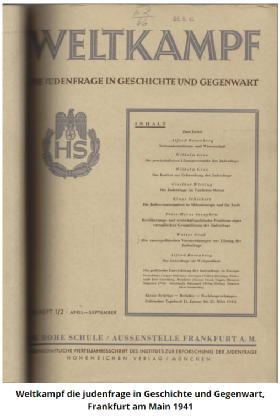
A list of new books published on the subject appears at the end of each issue of this journal. It is quite astonishing to go over the list and see how many publications (books and articles) about Jews were written in the midst of the war and the Holocaust. In 1944, as the Germans suffered painful defeats in the east and as the Allies bombed German cities and prepared to invade the West, anti-Semitic academics continued to sit in the ivory tower, researching and publishing on the “Jewish problem.” It is even more astonishing to see that some of the books that came to the Institute in these years originated in the United States and England. How did they arrive in Germany from enemy states? Perhaps through a neutral state?
The Weltkampf periodicals came to the National Library after the Holocaust via Austria where many of the collections of the Advanced School of the Nazi Party were sent. They were kept at the monastery of Tenzenberg and found there after the war by British forces. Later, many other books were found and donated to the survivors of the Jewish community in Vienna. In turn, the community decided to donate these books to the National Library in Jerusalem. A few thousand books were sent to Israel in the late 1940s and about eighty thousand more books arrived in 1955. All of these books have been labeled to indicate their origins.
Some of the books that came from Austria to Jerusalem feature the stamp of the Advanced School of the Nazi Party – the institution that sponsored the “study of Jews without Jews” (Judenforschung ohne Juden) – alongside the stamp of the National Library of Israel.
WHY THE NAZIS STOLE SO MANY BOOKS
During World War II Nazis looted 200 million books by some estimates.
Unlike art theft, it wasn't mainly for profit
Salon, Noah Charney, May 28, 2017
Noah Charney is a Salon arts columnist and professor specializing in art crime, and author of "The Art of Forgery" (Phaidon).
Until the late 1930s, German children taught about rhinoceroses would have flipped their textbooks not to a photograph, but to a 1515 woodcut print by an artist who had never actually seen such a creature in the flesh. The artist, Albrecht Dürer, was the greatest in Germanic history, and the print is spectacular. It happens to be a pretty good impression of a rhino, but not one that was made by an eyewitness. A real rhino had been in display in Lisbon in 1515, brought there in 1513 from India. Dürer was sent a description and a sketch of that rhino by another artist, and from this he prepared his woodcut.
But while it is a wonderful artwork, it is not accurate and certainly not scientific. Dürer presented the animal covered in bony plates, as if it were wearing a natural suit of armor, complete with a throat protector (gorget) and what looks like rivets linking together various “plates.” It is rhino as medieval knight. He also showed the rhino as scaled, like a lizard (though some scholars argue that this is a representation of the dermatitis from which the captive rhino suffered after its four-month sea voyage from India to Portugal). Enthusiasm for Dürer overrode the desire for scientific accuracy. Even when photographs of rhinos were available, even when one could see a real rhino at the zoo and recognize the inaccuracy of Dürer’s version, the print remained the exemplar of rhinoceros-ness in reference books for schoolchildren.
WHICH BRINGS ME TO NAZI BOOK THEFT.
The scale of book theft during the World War II is immense, far dwarfing the already boggling numbers of Nazi art theft. While some have estimated the 5 million art objects changed hands inappropriately during the World War II, most of them stolen or appropriated by the Nazis, few have discussed the Nazi practice of looting books, rare and otherwise, from the libraries of conquered Europe. "The Book Thieves," a new book by Swedish journalist Anders Rydell, focuses on just this. Beyond the book burnings, book theft was engaged in on an unimaginable scale. In an interview with the European Review, Rydell explained that it “dwarfed the art looting,” with an estimated 100 million to 200 million books stolen during the war.
While it feels more logical to steal art (some exhibited as “degenerate,” other pieces sold to foreign collectors — including American and British ones — to finance the Nazi war effort, still others kept by avaricious Nazi high-ups for their personal delectation, and additional works intended for Hitler’s planned “super museum” at Linz) since it has an obvious value financially in terms of its sale, symbolically in terms of capturing the treasures of the vanquished and aesthetically, books are a rather different proposition. Sure, rare books and manuscripts can have a sale value rivaling artworks, but most of the books stolen by the Nazis were not financially valuable. The Nazi art theft bureau, the Einsatzstab Reichsleiter Rosenberg was originally founded to seize documents and archives that had a strategic value to the Third Reich, and only later began to consume artworks, too. And therein lies a clue.
Rydell’s analysis of why the Nazis took so many books reveals some chilling rationales. “The looting had mainly two purposes,” he said. “On the one hand, to ‘unarm’ their enemies by taking the weapons of thought — books, libraries, archives. In Poland, the Nazis even looted books from schools — in a Nazi-dominated East, Polish children didn’t have any need for higher education as, in the future, they would be reduced to slaves under the master race.” Kafka once said, “A book must be an axe for the frozen sea within us.” The Nazis aimed to disarm those they wished to see subdued by removing the weapons of thought.
Rydell continued, noting that “the second goal was even more devious." He explained, "By looting the libraries and archives of their enemies, the Nazis tried to take control over the memory and history of the victims. Alfred Rosenberg, who founded the Institute for the Study of the Jewish Question (and not coincidentally the ERR, which even bears his name), was afraid that, even if the Nazis won the war, future generations would judge them for their crimes. Therefore, it was important to control the memory of Jews, not as a way to eradicate them from written memory, but to establish the Jews as an incarnation of evil for all future generations.” Thus it was not for profit but for posterity and the ability to control it that the Nazis sought to wipe Europe’s libraries clean and to rewrite a version of history that best suited their spin.
This is where the example of Dürer’s rhinoceros becomes relevant. The German pre-Nazi government decided that it would rather have this print as exemplar of a species than an accurate picture of the real thing. It is a very Nazi sort of decision, choosing a leading Germanic artist for ideological reasons to include in books about facts, when the facts are not sufficiently self-promoting.
If you can eliminate bodies of knowledge, the compendia housed in libraries of the predigital era, where access to physical tomes was required to look up facts, then you can rewrite fact as you see fit. That was what Nazi book theft was about. The ability to manipulate history, and therefore program the thoughts of future generations, is far more valuable than the auction price of a painting. But it requires a colossal-scale operation, sweeping libraries clean because “real” history books lurking here and there would be like time bombs. Future scholars might find them and question your tailored version of reality. Thus it is not outrageous to see the Nazi attempt at wiping history clean by stripping Europe of its books as analogous to attempts to physically wipe Europe clean of what the Nazis considered “lesser” races. They are part and parcel and, as Rydell argued, they are also chicken and egg.
Today information remains in books, and that information tends to be deemed most reliable. Presumably one or more editors and fact checkers have examined the material, and particularly in scholarly works with citations, the content of these tomes is likely to be accurate to the best knowledge of contemporary researchers. But still searching for answers in libraries and books is limited to but one subsection of the world’s population: students and professors and scientists and the odd intellectually rigorous laypeople. Most folks go online for “facts” and read sites like Wikipedia, which anyone can alter (for better or worse). A contemporary version of the Nazi book theft would be if, say, some presidential candidate — in league with some superpower in opposition to the country where that candidate was running for office — were to somehow take over the entire internet and erase fact-based pages, in order to replace them later on with histories of their choosing. After a generation or so, the world might forget how history had been presented before and learn only this newly imposed version of events. Logistically, a cyber-conspiracy of that sort would be easier to pull off than seizing every single book across an entire continent.
Among many proper photographs, you can still find Dürer’s print on the Wikipedia page for rhinoceros. If one day the photographs vanish, and we’re left only with a single, ideologically chosen exemplar (no matter how beautiful), then it’s time to start worrying.
Looted Art The United States Holocaust Memorial Museum
The Smithsonian links to lost art databases in Austria, Czech Republic, France, Germany, Netherlands, Poland and Russia.
The website lootedart.com’s Information Database contains laws, policies and reports from 49 countries. Its Object Database contains details of over 25,000 looted or missing objects – paintings, drawings, antiquities and Judaica.
The Art Loss Register calls itself “the world’s largest database of stolen art.”
Most owners of art of questionable provenance do not go out of their way to flag that the collection that they own today may be a result of art that had been confiscated by the Nazis. However, I came across a fascinating BBC article about one company which treats its art – and its responsibility to the past – differently. Dr. Oetker, the German frozen pizza and processed foods company, has historic ties to the Nazis. It has amassed thousands of priceless items, some of which may be Nazi confiscated art. They have voluntarily entered the details of more than 1,000 pieces of art onto lootedart.com.
“It’s a pity that there are still some companies that haven’t stepped into their history,” Joerg Schillinger told the BBC. “We were quite late, 70 years after the war, but we are very happy that we did it.”
Provenance in the World War 2 era, 1933-45 Smithsonian Institute
Background, Documentation, Law and Research
( Provenance is the history of ownership of an artwork or other artifact and provides important information about the attribution (determination of authorship) of the object. Researching the provenance of collections is a fundamental aspect of curatorial work, but this research is labor intensive.)
Use these online resources for additional information on World War II era provenance issues, documentation, history, laws, policies, and research. These links include the American Association of Museums Nazi-Era Provenance Portal, the AAM and AAMD guidelines and related material, and independent and governmental Web sites that address World War II / Nazi-era cultural property policies and background records and documentation on restitution efforts after 1945. (Updated March 2010)
Lootedart.com
The Central Registry of Information on Looted Cultural Property
1933-1945
This site contains two fully searchable databases.
The Information Database contains information and documentation from forty nine countries, including laws and policies, reports and publications, archival records and resources, current cases and relevant websites.
The Object Database contains details of over 25,000 objects of all kinds – paintings, drawings, antiquities, Judaica, etc – looted, missing and/or identified from over fifteen countries.
All images on the site are published under fair use conditions for the purpose of criticism and research.
For a list of Essential Website Links, showing all key research sites and resources,click here. For Bibliographies on all aspects of looted art, the art trade, archives and restitution, click here.
For details of the most recent international resources, click here and also see below, Online Resources and Case News.
Experts around the world use our services to check the provenance of items before they buy or handle them and to record items they own or that have been lost to maximise their chances of recovery.
1/4 ART OF THE HEIST 2 -
THE LADY IN GOLD
Art Documentaries, 2015 (15.00)
2/4 ART OF THE HEIST 2 -
THE LADY IN GOLD
Art Documentaries, 2015 (15.00)
3/4 ART OF THE HEIST 2 -
THE LADY IN GOLD
Art Documentaries, 2015 (15.00)
4/4 ART OF THE HEIST 2 -
THE LADY IN GOLD
Art Documentaries, 2015 (15.00)
HOLOCAUST REPARATIONS
RECOVERING NAZI PLUNDER
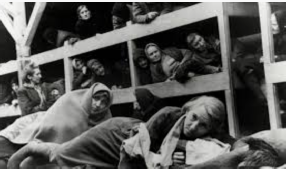
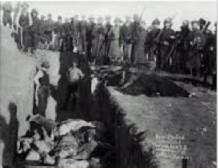
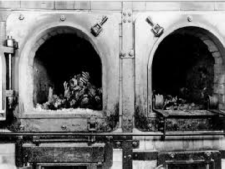
THE
INCREDIBLE
STORY OF THE JEWISH PEOPLE
